 Joining me for this episode is known as a world expert on choice and decision-making, Sheena Iyengar. She is here with us today to share her recently released book entitled Think Bigger: How to Innovate.
Joining me for this episode is known as a world expert on choice and decision-making, Sheena Iyengar. She is here with us today to share her recently released book entitled Think Bigger: How to Innovate.
Sheena is the inaugural S.T. Lee Professor of Business in the Management Division at Columbia Business School. Her research, which is regularly cited in the New York Times, Wall Street Journal, and in popular books, focuses on the many facets of decision making, including: why people want choice, what affects how and what we choose, and how we can improve our decision making.
Sheena also has TED talks which have collectively received almost four million views. She is also an award-winning author as her first book The Art of Choosing received the Financial Times and Goldman Sachs Business Book of the Year 2010 award, and was ranked #3 on the Amazon.com Best Business and Investing Books of 2010.
And just last April 11, she released her new book Think Bigger: How to Innovate. In this book, Sheena answers a timeless question with enormous implications for problems of all kinds across the world: “How can I get my best ideas?”. It also offers an innovative evidence-backed method for generating big ideas that Sheena and her team developed and refined over the last decade.
If you’re interested and want to know more about Sheena, please click here to visit her website.
I hope you enjoy my engaging interview with Sheena Iyengar. Happy listening!
You may also refer to the transcripts below for the full transciption (not edited) of the interview.
Greg Voisen
Welcome back to Inside Personal Growth. This is Greg Voisen, the host of Inside Personal Growth. And joining me from New York on the other end of this zoom call and audio call is Sheena Iyengar. Am I pronouncing that right? I want to make certain. And we're going to be talking about Think Bigger: How to Innovate. She is a professor at Columbia Business School. And good day to you, how you doing?
Sheena Iyengar
I'm great. How are you doing? Good, beautiful day here in New York City.
Greg Voisen
Well, I'm glad to hear that it's a beautiful day here in Encinitas, California, as well. And I'm gonna let my listeners know a tad about you. She is the S T li Professor of Business in the management department at Columbia Business School, and the best-selling author of The Art of choosing we were just talking about that before coming on the air. That was a book that she wrote in 2010, that I was very fascinated about. She's a leading expert on the study of innovation, choice, leadership and creativity, and regularly consults with a range of organizations on methods for innovation. That is the quick part about it. You can also actually go to her website, which I had up here a second ago. What's the website for the book again? You know,
Sheena Iyengar
I think bigger.com
Greg Voisen
Bigger think bigger.com. She's also on a podcast. Well, not a podcast, but
Sheena Iyengar
I'm on LinkedIn. Yeah.
Greg Voisen
And you're on Think big. And we'll put all the links in our blog, because I was watching the recording that she did for Think big. So, you know, she, you know, there's a lot of things going on our world deep today. And we need people that think big. And you wrote in, when you wrote your book, The Art of Choosing back in April 2010. We did an interview together. And I remembered it distinctly, I remember you talking about going down the grocery store aisle and looking at peanut butter, if I remember correctly, and there were too many choices. And you mentioned in the preface, that we have big problems that we need ways to create new choices to solve these complex problems. You call this method think bigger. Can you tell us a bit about the think bit bigger method, and how, you know, sometimes having too many choices, if we're going to bring that into this can really make it challenging.
Sheena Iyengar
So in the art of choosing, I really focus my attention on describing for people what I think the challenges are, that confront modern day, choosers are, and the biggest of which is the fact that we have a lot of choice. Most of those are meaningless choices, or illusory choices. We can't tell them apart, sometimes they're just noise. Sometimes they're irrelevant. Sometimes they're fake choices. But we've created a marketplace of choice that's, at times not really empowering, it can often feel more disempowering or paralyzing. Now, what think bigger aims to do is, essentially, help us with two things. One is, how do you do a better job of picking and finding so when I think of choice and the power of choice, what does choice allow you to do? The tool choice enables you to pick and find what I'm looking for, you know, the perfect career, how do I find it. And the second thing it allows you to do is create, there really isn't a career that I really like out there, how do I create one that's really meaningful. And so essentially, what the goal of Think bigger is, is to help you really leverage the power of choice. And this toolkit enables you to do both those things, which is how to become a better picker, and finder, and how to become a better creator. And when I say creator, I mean creator of meaningful choices. So these are not, these are for problems that you genuinely want to solve. You're not just looking for a quick solution that doesn't matter so much.
Greg Voisen
And I remember you saying in the book, sometimes, you know, when we go after something, we go after it to think bigger. It isn't incremental, you know, we'll think of this big problem we'd like to solve like, at this point, let's talk about the environmental warming and on the co2 emissions and it's very, very big problems gonna take a lot, but it needs to kind of be The Divide, how do you want to call the proximal goals? Right? The smaller goals that lead to have
Sheena Iyengar
to start at a level that is doable, right? And yet, if you were to solve it at that doable level, solve it in a way that it's potentially scalable. I mean, we often forget that Amazon actually started with just books. It was it did not start as The Everything Store. Right, Netflix started off by sending you DVDs in the mail. It really scaled from there, but we often forget where things start.
Greg Voisen
I agree with you, we do. And we have a tendency to think, you know, I go back to the day of, you know, when we all look at the cell phones, we're holding, you know, like the palm pilot, and I thought that was a big deal, right? But that's where things start is we were sharing information on an infrared when we would go to meetings, right? And I'm old enough to remember that including the facts now everything is PDF, and Adobe's got a corner on that. But you know, you teach this course Think bigger at Columbia University. How does discourse evolve? And what are your thoughts on the current AI chat CBD technology evolution that's starting to do some of the thinking for us? I mean, we're talking about thinking bigger. There's obviously a big debate out there. The reason I threw that question in, although it's not in the book, is because I'm interested in seeing what professors like yourself. We’re thinking about that.
Sheena Iyengar
The I, I don't I think that church UBT is actually going to be a positive. I know, there's a lot of fear about it. What chat GBT allows you to do so think about what is a new choice. It's a new combination of old, old, existing ideas, right? And what Chet GBT allows you to do is create lots and lots of combinations, and lots and lots of iterations, seamlessly, really quickly, it doesn't get unlike a human being, it doesn't get tired, right? And what enables me to do me the human is, for once, I can actually see all these different combinations and compare and contrast. Which one do I like better? Which one seems to work better? How do I tweak them across in a way that I couldn't do before? So I actually think it's going to make you more creative. Remember, back in the day, we thought that the blue was going to kill chess, particularly when it you know, beat a human opponent. But actually, it turned out if anything, humans that had access to these computerized chess opponents over time have only become better chess players.
Greg Voisen
Yeah, and I would agree with you. I mean, I'm on the side that I think set chat CBT is going to revolutionize many different elements of our life.
Sheena Iyengar
Now, will it become something that is used for a dark side? Sure, everything is right. Like, think of the camera? Did it kill realism in terms of paintings. But guess what? It created Impressionism, cubism, and it even created the new art form called the photographer. Right. So in terms of art, it actually created more, did the camera as a tool ended up being used for other things that we didn't intend or expect it to be used. Sure, but that's how humans are. Well, the
Greg Voisen
technology, whether it's CBT, or it's the camera, or some of the other things we've talked about the cell phone has moved the epilation. Evolve society and people. And I think we have, as you say, more options, more opportunities to solve these problems in different ways. And you know, you wrote about it in your book, which I thought was pretty cool. You do a tandem ride early in the morning along the Hudson River with the destination being Statue of Liberty.
Sheena Iyengar
In fact, I just did it this past Sunday, when the weather was finally getting a little better.
Greg Voisen
Were you back on the bike again? Congratulations. Yes, thank
Sheena Iyengar
you. Sold it out. It was gold up until now.
Greg Voisen
Yeah. So why is the amazing symbol of the Statue of Liberty and liberty and triumph and getting it erected? Because you tell the whole story about how you know is made in France and we had erected put it up these heroic stories that you say there's two key elements of creative genius, and ceaseless effort. And I think we've talked a little bit about ceaseless effort because you got to stay consistent at it. You have to be persistent. Speak with our listeners about those two elements and the story if you would.
Sheena Iyengar
Well, I think whenever we think of the big idea, and whether it's Lady Liberty, whether it's Steve Jobs and the phone, whether it's Mahatma Gandhi, me could take any artist, any innovator, any great sort of thought leader. And you can we often love to tell their story as a hero's journey. And Disney makes almost every movie as a hero's journey and makes a lot of money. And what is the hero's journey, it's, I have an idea. I now have to cross many hurdles. I you know, sometimes there's a bad guy, sometimes it's just I have to climb mountain after mountain to finally get there. And then at the end, the hero either tragically dies or wins against all the odds. We love those stories, because they're inspiring and they're motivating. And Lady Liberty is no different. Right? It's actually a phenomenal story. You know, he is a guy who has to really fight to build this, you know, statue that sits in our harbor. First, he had to crowdsource it from France to get the regular people to fund it. It was supposed to be a way to mobilize the French to really believe in democracy and freedom, resurrect their faith again. It was supposed to be gift to the United States get to the United States, we still need funding to actually, you know, put the statue on to something, some kind of a pedestal. Again, they had to do fundraising. In fact, that guy Pulitzer, you know, who we named the Pulitzer Prize after, he was actually the one who led this sort of called it crowdfunding or Kickstarter campaign long before that existed. And, you know, people to pay by dimes, and nickels, and each person that contributed their name appeared in the paper, and little by little, we formed the statue. And it's a great story, right? And not only did they build it, and that the moment when it's unveiled Emma Lazarus crew, writes this beautiful poem commemorating its purpose and the world has never been the same. It's not just a statue. It's a symbol of New York. It's a symbol of the United States. It's a symbol of freedom, democracy, tolerance, opportunity, the American dream. It just stands for so much. Of course, it's just a statue. And I think in the midst of all these stories, what we forget to think about is, how did the person actually get the idea? Right, yeah, okay. Yeah, I get any, once they had an idea, they had to go through all these trials and tribulations to sort of an machinations to get it there. And they actually probably adapted more than you realize, but that's the less sexy part of the story. But have you got the idea? We never answered that. In the Disney World. Movie, we act as if that part just happens like magic. Maybe you were sitting under a tree, or you know, revelation came into came to you while you were sleeping. And so what I what I the reason why I focused on Lady Liberty's Yeah, she's such an amazing symbol. And it's such a beautiful story. And yet, we never tell you how Bartoletti actually got the idea. And do you want me to walk people through the idea?
Greg Voisen
I think it would be good, you know, because the idea then developed into, like you say, this ceaseless effort, you were talking about what Pulitzer had to do and the rest of it. Yeah, but the idea is really the spark
Sheena Iyengar
the ignition. So how did he get the idea of what Lady Liberty would actually be? And so she's as big as one of the large, colossal sculptures guarding the ancient Egyptian tombs. And that's because Bartoletti spent his youth in Egypt and was inspired by those sculptures. It has the crown of liberty talks, which was a Roman goddess, and that crown was found on a five franc coin at the time that Bartoli would have been making the sculpture. It has the pose in the posture of a very famous painting at the time, love fairy tale, the lady of truth that was painted by love. And it has the face of his mother. If you put all those pieces together, you have laid liberty. And so what we think of the narrative of everything else, you know, his life and what he had to do. But where did he get the idea? And the idea that he got for how he put it together is none other than the same way you get ideas for all kinds of things that you do every single day of your life, you simply take elements that are familiar to you. And you combine them in a way that makes sense that works for you. And that's what he did to
Greg Voisen
put the dots together, right?
Sheena Iyengar
You put the dots together? And yeah, and yes, the whole was greater than the mere sum of the elements, but it's still a combination.
Greg Voisen
Right, that makes the whole. So how he got all these pieces that he was thinking of, to actually create the lady of Liberty is, that's really quite interesting, because that's the, like, you were saying 10 minutes ago, we always seem to forget how we evolved to get where we are today, you know, we just didn't start off with the cell phone, I was using a Palm Pilot, right? These things, they evolved their iterations. And I even speak about that in my book as well, you know, you get an intuition, a thought and idea, and you have to then write the idea down, and then you have to take it through a cycle to kind of innovate it. But you mentioned that think finger offers the reader a set of tools and skills to solve any kind of complex problem. Can you speak with the listeners about the six steps and the roadmap you've created? For better understanding how to solve big problems, because the book, you know, this is the essence of the book, folks, people listening is basically kind of these six steps. And I think that knowing what those steps are, makes it easier for somebody to put it into context. Because when you and but also, when you have such a big idea, you need to break it down and chunk it out and figure out when the first one is, you know, figure out the problem you're going to solve. Right?
Sheena Iyengar
That's right. I This is a very practical book. And that really was my intention. I've made, you know, think the art of choosing was meant to be very descriptive, and tried to be very holistic, think bigger, is really making trying to be very practical, give people a book that's easy to read. And very tactical, like, here's what you do, you need to solve a problem, here's your six steps that you can do, because I'm trying to make it so that we no longer have this myth, that creativity is meant for those who are so called creative types, or the so called geniuses like Bartoletti, or Einstein, or Newton. Anybody can innovate. And in fact, we all do innovate from the moment we're born, we are innovating every single day of our lives, we just don't call it that. And so what I'm doing is being very deliberative about telling you, here's what you do step one, step two, step three, step four, step five, step, step six, so that you can see what not only what our brains would normally do, but how to do it in a deliberative way. So that you don't feel like you have to wait for magic to happen instead. Anytime you need a solution, here's your little go to method to do it. And so would you like me to just briefly walk you through the steps?
Greg Voisen
Yeah, I think that would be good for the listeners to understand what those six steps are.
Sheena Iyengar
So the first question you ask yourself is, what's that problem you're trying to solve? And it can't be too big. You're not solving world hunger. It has to be something that is doable, solvable, but solvable, that if you were to solve it, you could potentially scale it. And all I catalyzed a creative way that people could buy books more conveniently and cheaply and, and seamlessly, beginning of Amazon. So what's the problem I'm trying to solve, find one that that is strategically helpful and solvable. Break it down into its most important parts. So in order to be able for people to be able to buy books easily, what would I have to make easy for them? So I'd have to make it easy for them to pay. I'd have to make it you know, product that doesn't break along the way you know. So you figure out what are those subproblems that you need to solve for, then you ask yourself, if you were to solve and come up with the ideal solution for your problem? How would you want the solution to feel like what are the main characteristics? We often forget to do this. And that makes it hard for us to know how to choose once we have multiple solutions. So I have people do this. And the third step, I call it compare once. And that's where I say, okay, so what are the sort of three attributes? There are three adjectives that have to characterize or describe your soul, your ideal solution. The fourth step, search in and out of the box, and think bigger, we create something called a choice map. And in the choice map, you have the problem, you have the breakdown. And then for every sub problem, you search far and wide. And we will give you techniques for doing that. So that you can identify ways in which this problem has been solved for not just in your industry, but in totally different, different industries, as well as in different points in the past. So you're collecting different strategies for solving the various parts of your problem. Step five is something I called Choice mapping, which is my alternative to brainstorming, which is when you take these strategies, and you combine and recombine, and you can combine in lots of different ways. In a typical choice map, which a prototypical choice map would be what I call a five by five, you can generate 3125, unique solutions, that's definitely a way that you can get many, many solutions. But because you've already identified your wants in the third step, you actually don't have a too much choice problem, you will know how to weed them out, and you have a selection criteria. And then the sixth step is what I call the third eye. Because a lot of times, once we have an idea, we think we're done, but it's in your head, you know, you're not ready to go out into the world and ask people to like it. Instead, you have to first see how others are going to see the idea and how they're going to interpret the idea, do not have an idea until there's an alignment between what you're thinking your idea is and how others are going to receive it. And so I have a series of exercises for people to do that.
Greg Voisen
Would you expect them Shana to actually wait and till the end? Before they share that? Because I know there's this common misconception that, you know, as you share your ideas, you know, I mean, how many have we had that people said, Oh, you're an idiot, or it's not gonna go anywhere, or, you know, because we're talking to all kinds of people at different levels out there, we're talking about individuals that are sitting trying to create a new way to make something better in the world, to big companies like IDEO, who does that? Pretty much as part of their business model, right? So when I get this idea, and I do this needs, and I come down to this last step, which is number six, do you think that that's the best time to start sharing my idea with others?
Sheena Iyengar
Well, I think you're sharing, you're asking a lot of questions up until that like, in order for you to do a breakdown, you have to talk to a lot of people so that you fully understand what are the main reasons why this problem exists. Like, you know, why is there a lot of fake news? For example, or, you know, how do people think about how to find a career, you're definitely out there talking to people to better understand the problem. And when you get to the point where you think you have an idea, the temptation for anybody is going to be to tell you how they feel. They can't help that is the what's important for you. The idea creator, is to smile and get past that and really just ask people. So what about this works? What about this doesn't work? If it were you, how would you improve it? Or if it were you, how would you present the idea if you were presenting it? And that's how you learn.
Greg Voisen
Right? The manifestation of your ideas into materialistic form is one thing and the steps you're talking about. These six steps are so important to go through Um, to distill your idea down and then to know that it's viable solution. And I think that's it. And I know, in the book, you said that this is this system that you've got, and your, your mapping is different than brainstorming. And you mentioned in 1938, that Osborn was the guy who kind of invented brainstorming, and that there were five rules for brainstorming, and the controversy about the, what's called Creation biased, was embedded in the group brainstorming process. Speak with the listeners about that, because you also spoke about, you know, Roger Sperry, the Nobel Prize guy, and his ties with left brain light, right brain because that's a kind of, I think people have read this, you know, well, who's more creative? And then Oh, am I going to use brainstorming? And why wouldn't I use brainstorming? And this creation bias that's embedded in it is one of the reasons not to use it, correct?
Sheena Iyengar
Yeah, I mean, Alex Osborn, to be fair, wasn't trying to come up with a new method for creativity. He was just trying to solve a very simple problem, which he did solve. And that was how do I get more people to chat? We have a real hierarchy in the office, I do all the talking. He was the leader. How do I get more people at the table to talk and his five rules, solve that problem? defer judgment, build on the ideas of others, encourage wild ideas, go for quantity. Stay focused. So those are the rules that are still used by IDEO. And for the intentions of Alex Osborn, he created a set of rules that brilliantly enable you to have a wonderful dinner conversation. I mean, those are great rules for having a great dinner conversation. It's they're also great rules for you to sort of share your thoughts, your you know, who you are piece of yourself, learn about each other, learn what each other knows, least a little bit. But it's not how you're going to get a great idea. It's not how you're going to get a solution to a complex problem. It could be a way to create coordination, like, you know a little bit about this part of the business. And I know a little bit about this other part of the business. And so the person knows a little bit about this other part of the business, we all share the information, we might be able to coordinate Natanz, it's great. But we're not going to solve the problem of Oh, my God, we're about to have a shortfall of, you know, half a billion dollars. What's the solution? We're not going to get that in a 20 minute brainstorm. What about
Greg Voisen
in just the ideation part of it? So in other words, I did an interview with a gentleman who wrote a kind of a whole book about this. Ideation salons. So when you're actually evolving the idea itself, with many people, now, maybe you're not calling it brainstorming. But in essence, it kind of would be referred to as brainstorming. what's your what's your sense of that? You know?
Sheena Iyengar
Well, my feeling is we throw out the word brainstorming a lot, too. We do. I know. Yeah, for pretty, pretty much any kind of conversation or thinking. So let me be clear, when I say brainstorming is problematic, I mean, the traditional brainstorming of, hey, we've got a really big problem. Let's huddle together for 30 minutes and come up with a solution. I'll tell you the problem. Everybody throw out ideas. That's what I that's the one I'm saying isn't gonna work. Okay. Now, ideation itself. Sure. I mean, think bigger. Absolutely. It's it just what think bigger does is it guides you on when you reflect by yourself. When you collect information by yourself, when you share with others, talk to others learn with others, combined with others in terms of information bits. And it or and how do you organize the information so that you can now generate real solutions as opposed to just sort of wild ideas from thin air? Mm hmm.
Greg Voisen
I think it's a I think it's true. I think there's this part of the human species that has likes this collaboration, let's just call it collaboration. And it helps us spawn ideas that maybe we have up because we weren't eight, we got stuck. I think people get stuck frequently. And there's ways to get unstuck. Does the choice map help people and making these decisions, get unstuck, and then distill it down to the single best idea.
Sheena Iyengar
So here's how others can really help you with a choice map, I gave you three things that exists in the world as a potential things you could use to solve a problem. You're going to see how to combine them in one way, and I'm going to see how to combine them in another. And that's how we can really help each other. That's,
Greg Voisen
that's extremely valuable, I guarantee you, yes. So in the book, is that choice map, and I'm going to hold up the copy of the book again, think bigger, how to innovate, we're gonna have a link to that as well. Also, she's got a website, it's SHENAIYENG ar.com. And there, you can go look for resources and look more about the book. Now, I remember you, you put this statement in the book from Albert Einstein, it's been quoted many times. And he said, If I had an hour to solve a problem, I'd spend 55 minutes thinking about the problem and five minutes, thinking about the solutions, speak with our listeners about the iterative process of writing the problem, then reframing the problem, from different perspectives in order to find the most meaningful and feasible way to solve the problem, because in essence, that's what Einstein is saying, right?
Sheena Iyengar
Yes, you have to really we have, we all have a tendency of defining our problem as either too broad and vague or so narrow as to make it sort of meaning us. And so you've got to take that problem and really talk about it to multiple people keep framing and reframing and reframing and you look at it by stepping it up, as I call it, stepping it down, stepping it sideways, left and right. And little by little, you start to see which way to frame it so that it works.
Greg Voisen
Yeah, and it's all those iterations that do that. And you know, you had a great story in the book. Throughout the book, you speak about so many different problems, and you tell so many great stories, but there was one about the COVID crisis and the ventilator shortages, and you spoke beautiful,
Sheena Iyengar
yeah, 37 days, and they built a ventilator, even though they didn't have expertise.
Greg Voisen
Right? You said she had to read, wing her whole factory, and, you know, knew everything. But he also said, and one of my questions here is, because Steven Kotler has been on here so many times, we talked about the role of passion, that passion plays in the process of solving the problems. Can you speak about
Sheena Iyengar
that? See, I think it has to be a problem that you care about. It's a problem that you're willing to go out and search for information to try to help solve it. But I don't think that I think we often overuse the word passion, I would say that. I can't just ask you, hey, Greg, what are you passionate about? You might know, you might not know, my way of actually getting people to understand if they're passionate about something. And this is what I do with my students. Let's say you have a problem you think you're interested in? I have you pitch that problem, in the span of two hours, about 40 times. Let me tell you something, in two hours, if you have to keep pitching something over and over and over again, one minute a pop, and you're pitching in, and then you're watching other people's reactions, by the end of those two hours, a good chunk of them, rethink if that's something they're passionate about. They may start off saying I'm really passionate. But in two hours, a good chunk of them are ready to switch to something else. So I think that you want something you care about passion unto itself isn't going to give you the solution, what gives you the solution is finding the right bits to combine. But yes, you're going to spend a lot of time on it. So it's something you got to be willing to say got to be the kind of problem you're willing to dedicate a lot of time to. And so you want to do a little test for yourself. You're not gonna just be able to ask your god like, hey, is this something I'm really passionate about? No, you gotta go out there into the world and actually test it out. See, you know, did I pass this Passion Test?
Greg Voisen
Mm hmm. I believe though, and I've interviewed people that speak about this, you know, you, you've got curiosity, you know, if you're going to go solve a problem, you pretty much have to be pretty curious. You also have to be focused no on the say, okay, so, focus is kind of for free. But if you can get that focus, and then you have to have a passion, and then you have to set goals, and then you have to have, you know, interim goals. And I think that, you know, if you look at the evolution of how somebody comes about up, comes to a new idea, and then evolves a new idea into something, they obviously started that point of curiosity, would you agree with that, and then they distilled curiosity down into defining what the problem was, in your case, your six steps, and then moving, be it moving it all the way through?
Sheena Iyengar
Curiosity is very big predictor. So let's put it this way. If you look at creative outcomes, and you look at the research, passion, plays very little predictive power. Even when you look at like Kickstarter ventures, when you look at venture capital invest ventures, despite all the rhetoric around passion, that's not a big predictor. It's a very small predictor, much bigger predictors are how prepared was the Ideator. Now, you could say preparation is, in a sense, a real proxy for passion, right? If you're gonna win, I'll make sure you prepare that shows me look you care. Yeah. I guess it depends on how you're going to define passion. Curiosity, is in a sense, a proxy for, you know, are you going to spend the time really searching for what are different ways to think about how you're going to gather information. So maybe that's another proxy for passion.
Greg Voisen
And in a sense, I've personally defined a passion this way, because my purpose statement is I exist to serve to inspire passion, that's moving people from a point of not having much clarity to moving to a point where they've got real clarity with inside themselves. And I think, to have to work on an idea, you have to be very clear. Now it's going to go through its iterative processes over time, but it, you have to be pretty clear about what you're trying to solve, as you said, in the first one number, what are you trying to solve? And you do this great exercise call called Draw a dog with pence? And you mentioned that people emerge from the exercise was so many combinations of dogs with pants? Can you speak with that was a great, I'm really good, because I have two little dogs. So just thinking these dogs with pants on him? Can you speak about it?
Sheena Iyengar
Great, that's a great exercise. An example of the Third Eye, which is that I think I can be really clear in my instructions, which is just, you know, draw me a picture of a dog wearing pants, and I think it should be self-evident. And yet it's not. There's so many different ways in which people could end up doing it.
Greg Voisen
Yeah, yeah. I mean, you know,
Sheena Iyengar
This is a fun example. But take anything in the news, right? I mean, we think this is true, we were putting out a fact and yet to have people see it so differently, right.
Greg Voisen
Obviously, we've seen that happen with the evolution on the internet with, you know, our, our biases, that are being put out there and now with social media, through social media, and then causing great division amongst people as well as Is it true? It's true for me? It doesn't mean it's true for everybody. Or is it? Where is the truth? The big T, right? That's right. I mean,
Sheena Iyengar
I mean, that's the reason why I tell people like once you've got an idea, you've got to go out there. Right? And really just see how people see it. So like, I'll tell you another exercise they do that sort of like the dog and pants that's wonderful exercise that I do in class. I have everybody come up with a word. Take three minutes, just come up with a new word, and have to come up with a word and the definition of the word. And then, so they have their word and they have their definition. Now, each person has to go up to 10 other people and just say their word and then the other person tells you how they would define it. You know, like, spell Lilla. For example, the other person would say, you know, that means blah, blah, the next person would say that means blah, blah, blah. And let's say now you, Greg, collect up 11 different ways now of defining your word, your definition plus 10. Others. It turns out that after that, if I asked you, how would you define like, what's your word? And how would you define it? About 50%? We'll revise based on what they heard. Right? And by the way, the ones who are more likely to revise their words are more likely to win the word tournament.
Greg Voisen
I can see that happening. I'm visualizing that in my mind's eye to your ability to
Sheena Iyengar
revise having that open mind. I mean, it's getting back to your notion of are you curious to see how other people will see it? Are you going to have an open mind? Other ways, that ability to really pay attention and revise is what predicts success moreso than saying, hey, I've got this idea, and I'm going to stick to it no matter what.
Greg Voisen
Well, it's, you know, when I was getting my master's degree in spiritual psychology, we used to say, you don't have to believe everything you think. And the reality is, is that we have, we all have a lot of beliefs about things. Right. But the
Sheena Iyengar
question is willingness to question yourself, and rethink is always a healthy thing. Right? And
Greg Voisen
then, when, you know, I think some people will say, when does a belief become a knowing? When does a belief become a truth? And I'm not gonna we don't have time in this podcast to answer that question. Because I've seen the evolution of that. But, you know, we use descriptive words for things like belief and opinion, and unknowing and a truth. And all of these things, as you said, pick a word. And if I went up to somebody today and walked around your classroom and said, My Word is truth, and this is what I believe truth means there's going to be 50 other opinions about what truth means as well. And your ability to adjust to that, right? That's right. Yeah. And that's, that's, you know, what it's, that's awareness at its best level, really, that's a very strong ability to create awareness around your belief, having an Oracle ad add on thinking additional elements to it. Now, like your book, Think bigger. And I'm going to hold it up for the listeners so they can see this on the screen. How to innovate. It's, you know, it's got so many bits of advice, and so much, so many stories in it. Great stories, by the way.
Sheena Iyengar
Thank you so much. Yeah,
Greg Voisen
You took a long time to figure out which stories you were gonna put were in that one, I could tell. But what three bits of advice, I always like to leave listeners with advice that you would give them that could leave them about solving any size problem, but in this case, yours is a bigger problem, but
Sheena Iyengar
what would you tell them? I would say first you have to be choosy about choosing, not every problem is worth solving. Not every choice is worth making, figure out which choices are the most important. The second I would say is when you're stuck, the first thing you really want to do as stupid and obvious as it might sound is really ask yourself. So wait, what's the problem I'm really trying to solve? What is it exactly? Just that in itself gives you focus. And the third thing I would say is, once you've defined that problem for yourself, you want to ask yourself, Okay, so who do I know? Or who in the world would have had to have solved a problem like this? Let me go look it up. So that you're not just coming up with ideas in thin air, learn the best practices that exist, it'll make you a much better innovator.
Greg Voisen
That last one is really powerful Shana. So I want to thank you for that. I want to thank you for being on the show with us today and giving your words of practical advice around solving problems as well as your wisdom around it, because you've been doing it when you go back to the art of choosing. I think much of this is wrapped in that first book as well. And for my listeners, we've been on with Sheena Iyengar and the book is called Think bigger I will put a link to check that you can go to our website@shenaiyenjr.com to learn more about her. Sheena, thanks so much for being on inside personal growth and sharing about your new book, The stories in your new book. And I think most importantly, the six steps to thinking to thinking bigger. Thanks so much.
Sheena Iyengar
Thank you
Sign up to receive email updates
Enter your name and email address below and I'll send you periodic updates about the podcast.
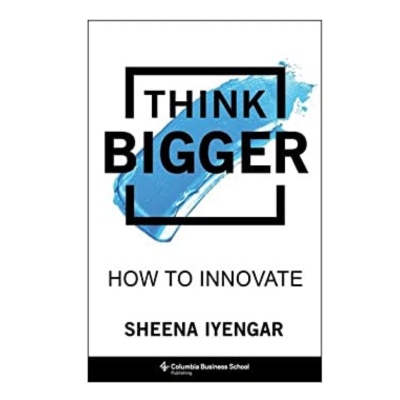
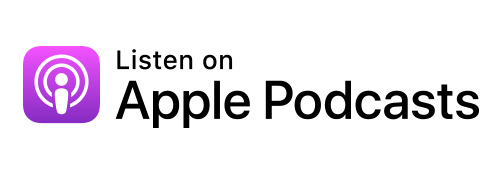

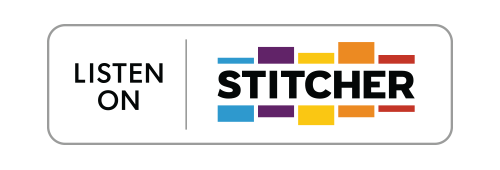


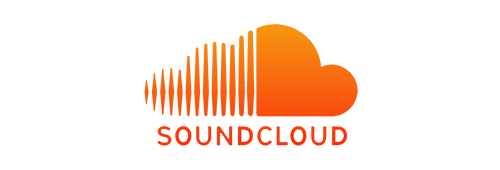

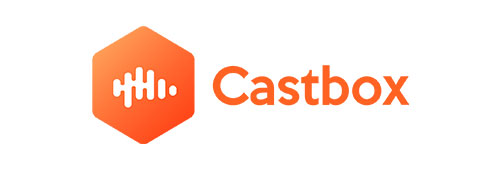
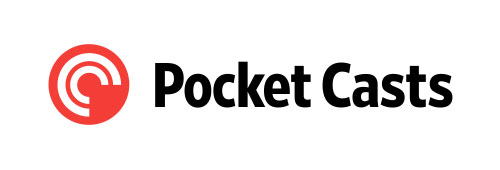
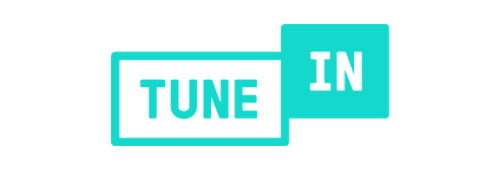
Leave a Reply